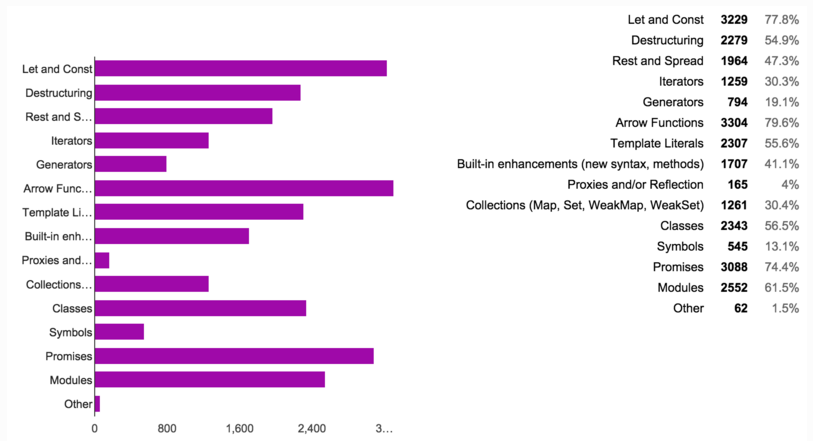

You can now specify integers in binary and octal notation:Ĭonst str2 = String ( sym ) // 'Symbol(desc)' const str3 = sym. For example:ģ0.2 New number and Math features # 30.2.1 New integer literals # New functionality in the standard library.Better syntax for features that already exist (e.g.There are three major categories of features: The built-ins are now extensible via subclassing.

The ECMAScript library of built-ins has been expanded to support additional data abstractions including maps, sets, and arrays of binary numeric values as well as additional support for Unicode supplemental characters in strings and regular expressions. Some of major enhancements include modules, class declarations, lexical block scoping, iterators and generators, promises for asynchronous programming, destructuring patterns, and proper tail calls.

The introduction of the ES6 specification lists all new features: Executing asynchronous functions in parallel Which operations related to property keys are aware of symbols? Pitfall: you can’t coerce symbols to strings Use case 2: constants representing concepts Variables that are declared with “Let” must be declared before usage.This chapter collects the overview sections of all the chapters in this book. Variables that are defined with “Let” will have a “Block Level” scope. Variables that are declared with “Let” cannot be redeclared. The “Let” keyword is a useful addition to JavaScript. Ten ES6 Features Supported Natively By Modern Web Browsers

Once you are acquainted with these features, you will feel the difference in the way you write your code. I will demonstrate some of the useful features that you should start utilizing in your projects and improve your experience in JavaScript. Honestly, a lot has changed when JavaScript launched ECMAScript 2015 or simply ES6. Web developers who have just started learning JavaScript or have professional working experience can benefit from this article.


 0 kommentar(er)
0 kommentar(er)
